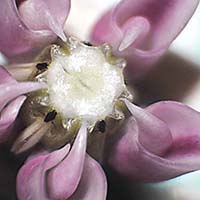
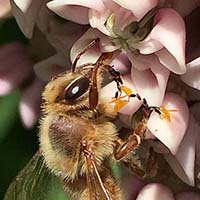 Asclepias syriaca - Common milkweed
Asclepias syriaca - Common milkweed
Asclepias syriaca
This is probably the most numerous milkweed in Iowa. It is tall-often chest high, broad-leaved, petiolate, and the pods (fruit) are distinctly papillose. While it is numerous, its distribution is not uniform and in some regions of Iowa it may be outnumbered by other species.
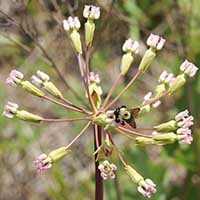
 Asclepias amplexicaulis - Sand milkweed
Asclepias amplexicaulis - Sand milkweed
Sandy soils are the preferred habitat for this milkweed. It is medium height-about knee high, although sometimes prostrate. Its broadleaves clasp the stem at their base and may overlap.The rounded inflorescence heads are more open than those of other local milkweeds
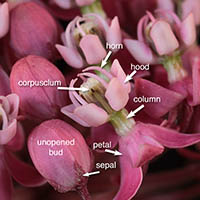
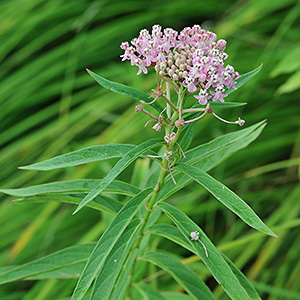 Asclepias incarnata - Swamp milkweed
Asclepias incarnata - Swamp milkweed
One of Iowa's two most colorful milkweeds, this one is tall (~4 ft) and prefers swampy or marshy areas in full sun. Flowers appear light pink to a rose and white mix. Leaves are narrow and abundant along the stem.
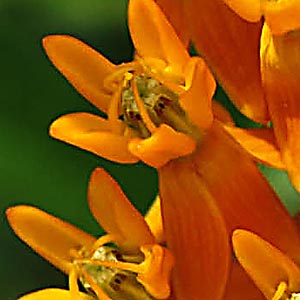
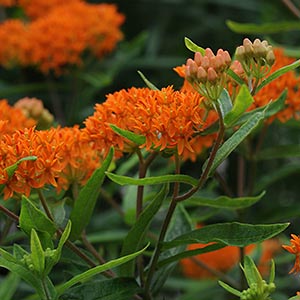 Asclepias tuberosa - Butterfly milkweed
Asclepias tuberosa - Butterfly milkweed
Probably Iowa's most colorful milkwood-its orange colored inflorescence is popular in Iowa's gardens. It is a medium sized native plant which is at home in sunny mesic prairies. It's leaves are narrow, the fruit is slender and stands upright on the plant.
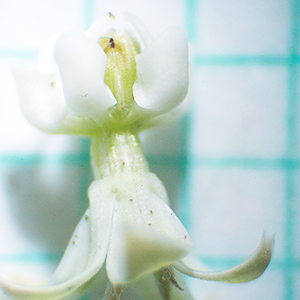
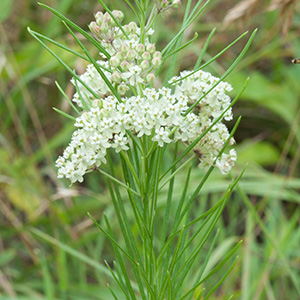 Asclepias_verticillata - Whorled milkweed
Asclepias_verticillata - Whorled milkweed
A medium sized milkweed, about knee high, with white flowers and slender grass-like leaves. The sessile leaves are usually attached to the stem in whorls. It is often found along roadsides, in old pastures and along the edge of woodlands-usually in sandy soils.
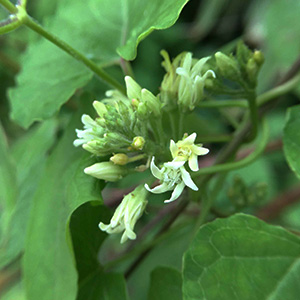
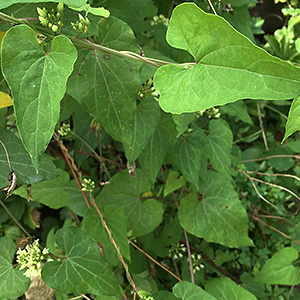 Cynanchum laeve - Bluevine/Honeyvine
Cynanchum laeve - Bluevine/Honeyvine
Unlike the other Iowa milkweeds which are assigned to the genus Asclepias, Honeyvine, as its name indicates, is a vine and is assigned to the genus Cynanchum. Monarch butterflies are very fond of this milkweed but gardeners and landscapers find it hard to remove once it is established. It is frequent in S.W. Iowa.
12 Milkweeds that are scarce or endangered in Iowa
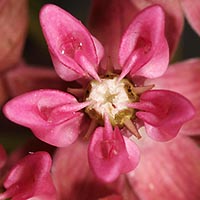
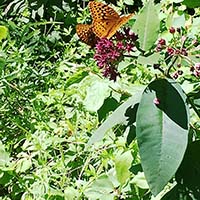 Asclepias_purpurascens - Purple milkweed
Asclepias_purpurascens - Purple milkweed
Only occasionally seen in Iowa.

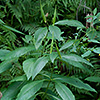 Asclepias_exaltata - Poke milkweed
Asclepias_exaltata - Poke milkweed
Only occasionally seen in Iowa, most frequently seen in eastern Iowa.

 Asclepias_engelmanniana - Engelmann's milkweed
Asclepias_engelmanniana - Engelmann's milkweed
At this writing it is listed as ENDANGERED in Iowa. However, a recent re-examination, at the Ada Hayden Herbarium of the few specimens so named, found them to be A. stenophylla and the examiners have concluded that A. engelmanniana does not exist in Iowa.

 Asclepias_stenophylla - Narrow-leaved milkweed ENDANGERED
Asclepias_stenophylla - Narrow-leaved milkweed ENDANGERED
Only a few individuals have been seen in western Iowa, which is at the north-eastern edge of its current range. Mature plants are from 2 to 4 feet high with slender stems and leaves. inflorescences are umbels of greenish-white flowers arising from leaf axils. They are found in sandy or rocky soils.

 Asclepias_meadii - Mead's milkweed ENDANGERED
Asclepias_meadii - Mead's milkweed ENDANGERED
Only occasionally seen in Iowa.

 Asclepias_lanuginosa - Woolly milkweed
Asclepias_lanuginosa - Woolly milkweed
THREATENED and rarely seen in Iowa.

 Asclepias_speciosa - Showy milkweed
Asclepias_speciosa - Showy milkweed
THREATENED and rarely seen in Iowa.
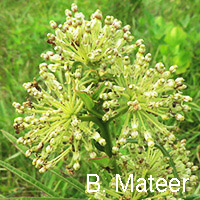
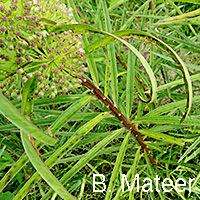 Asclepias hirtella - Tall Green milkweed
Asclepias hirtella - Tall Green milkweed
Only occasionally seen in Iowa.
Thanks to Barry Mateer for providing these photos on loan to us until
the site for this plant is completed.

 Asclepias_ovalifolia - Oval-leaf milkweed
Asclepias_ovalifolia - Oval-leaf milkweed
Only occasionally seen in Iowa.
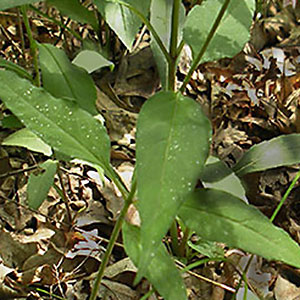
 Asclepias_quadrifolia - Fourleaf Milkweed
Asclepias_quadrifolia - Fourleaf Milkweed
Only occasionally seen in Iowa.

 Asclepias_sullivantii - Sullivant's milkweed or smooth milkweed
Asclepias_sullivantii - Sullivant's milkweed or smooth milkweed
Eilers and Roosa describe Sullivant's milkweed as infrequent to rare throughout most of the state; although, it has been reported in nearly half of the counties in Iowa. It resembles A. syriaca (common milkweed), but is smooth (or at least less hairy) in contra-distinction to A. syriaca. A. sullivantii tends to hold its leaves at an upward angle, its leaves and stems are less hairy, and its pods have fewer papillae when compared to common milkweed. While the two species have many similarities, some workers, familiar with both species, have noted that the leaf midveins are a darker purple in A. sullivantii, and its leaves lack the short petiole found in the leaves of A. syriaca.

 Asclepias_viridiflora - Green milkweed
Asclepias_viridiflora - Green milkweed
Only occasionally seen in Iowa.